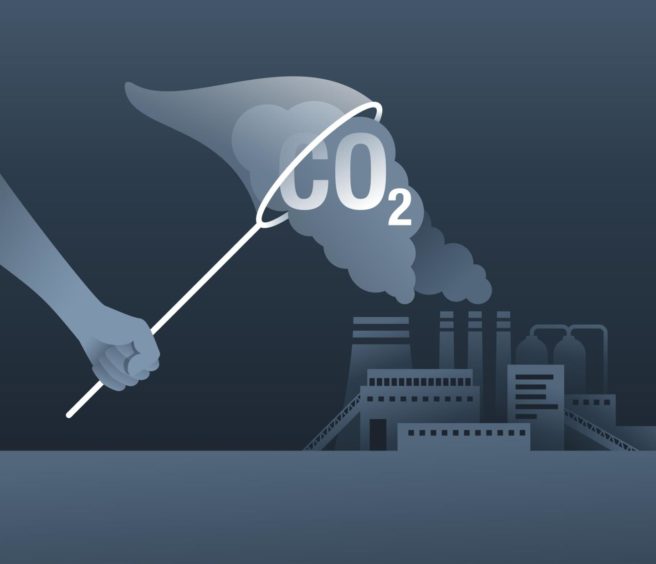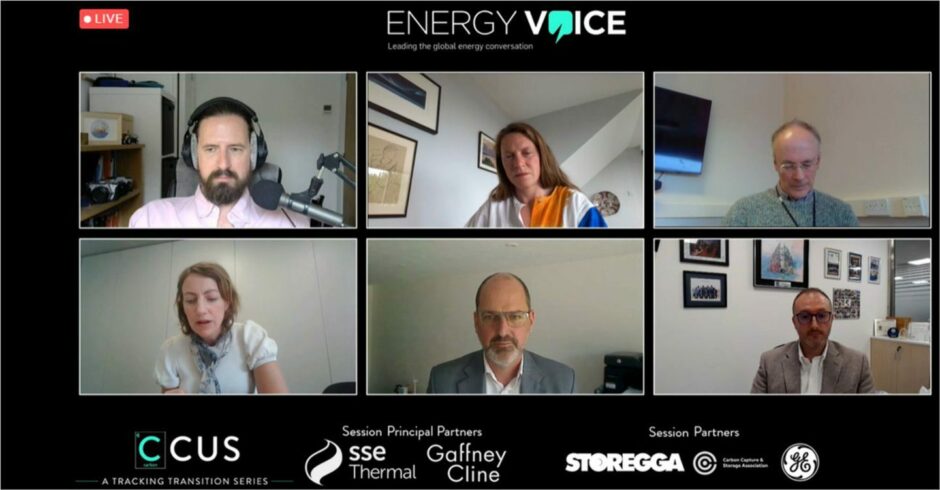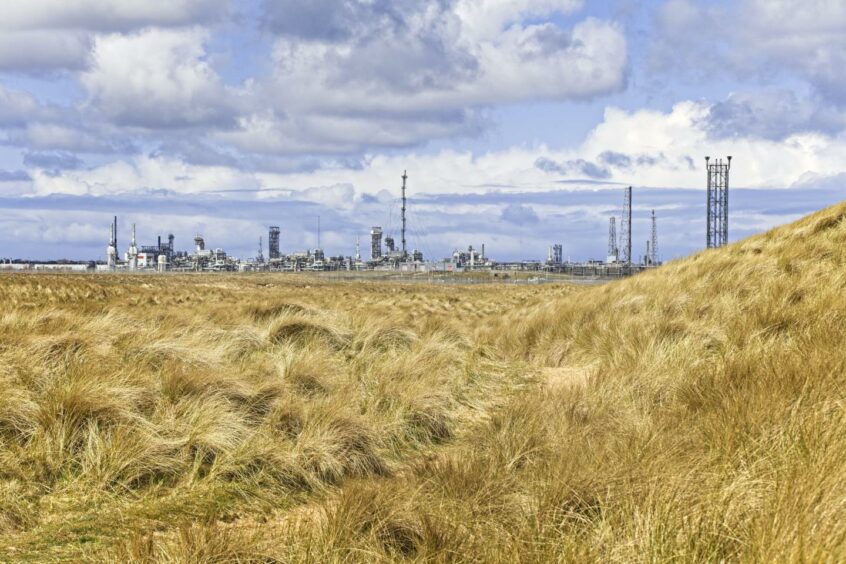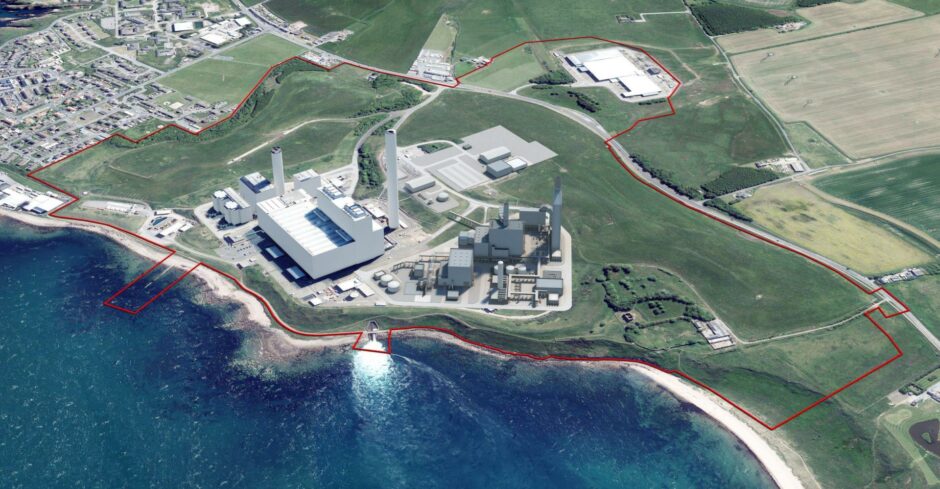
Energy chiefs have given reassurance that while the pipeline of carbon capture and storage (CCS) projects is currently “modest”, it is “growing rapidly”.
Energy Voice hosted the inaugural session of the CCUS – A Tracking Transition Series online yesterday afternoon, during which experts analysed the role the technology will play in delivering net zero.
Representatives from the likes of SSE Thermal, Storegga and Gaffney Cline also discussed the pace of rollout, as well as previous false dawns.
Ruth Herbet, chief executive of trade body the CCSA, acknowledged it was “third time lucky” for CCS in the UK.
She said: “We’ve had two false starts. I was part of the first one in 2008/09 when I was working on CCS for the government.
“Then it nearly started again in 2015 and the government cancelled the programme again. I’m hoping this is third time lucky.
“The net zero strategy published last year showed that CCS has a really key part to play in the UK’s transition to net zero. The IEA has shown the same thing globally. There’s a lot to do, and not very much time left.”
CCS has its origins in enhancing oil and gas production, with operators injecting carbon into reservoirs to increase yields.
It has been adapted dramatically over time though and it is now widely acknowledged as being a key weapon in busting emissions.
To date deployment of the technology has been slow though and there are only a handful of operational CCS projects across the globe.
Mark Wilkie, carbon management director at energy consultancy Gaffney Cline, said: “In terms of general patterns we’re seeing globally, it’s fair to say that pipeline is relatively modest at the moment, but growing rapidly.
“We are seeing a fundamental shift from natural gas processing and using CO2 for enhanced oil recovery, to capturing emissions from industry for sequestration. It is an exciting time and there are a number of things that are coming together that will move CCS on as a real and practical abatement solution.”
In addition to its decarbonisation credentials, it is also hoped that CCS will provide alternative employment for thousands of oil and gas workers.
That is particularly pertinent in Scotland given the country’s exposure to the North Sea industry.
A bid was submitted by the Scottish Cluster last year to be part of the UK Government’s CCS vanguard, but it missed out and was instead chosen as the reserve scheme to much fury.
At the heart of the Scottish Cluster is the Acorn project, which is being developed by Storegga, Harbour Energy, North Sea Midstream Partners and Shell at the St Fergus gas plant, Aberdeenshire.
Storegga’s chief technology officer, Alan James said: “Together we’re focussed on the development of the CCS programme through the transport and storage infrastructure that we’re laying out in the north-east of Scotland.
“This is based around a portfolio of three pipelines, which are on the seabed now and ready to be reused. Together they have the capacity to be able to transport 20 million tonnes of CO2 offshore to secure storage sites.
“Around 30% of the UK’s total storage space offshore lies within 50km of this pipeline corridor. Strategically it’s a very important place, not only to provide service to our customers, but also to provide service to customers overseas in Europe, with CO2 delivered by tankers into Peterhead deepwater port.”
One of the many companies planning to tap into Acorn’s emissions storage potential is SSE Thermal.
Alongside partner Equinor, the company wants to hook the carbon intensive Peterhead Power Station up to the scheme in order to decarbonise the facility.
Hannah Bronwin, director of business development at SSE Thermal, said: “We believe that multiple CCS power stations are needed this decade so we’re working with our partner, Equinor, on a first of a kind CCS plant up at Peterhead, as well as Keadby in the Humber region.
“Each of these power stations could capture around 1.5 megatonnes (Mt) of CO2 annually, which would make a really significant contribution to the UK’s target of 20 to 30 Mt by 2030.”
While CCS may still have its critics, it offers a solution to one of the major quandaries of the energy transition; how to decarbonise hard to abate sectors.
Producing concrete, steel and power more generally results in a large amount of emissions, yet forgoing them is not an option.
And while there are still a great deal of unknowns around how CCS will function on a large scale, Energy Voice’s expert panel were clear that net zero can’t happen without it.
Salim Mousallam, executive director of decarbonisation strategy and partnerships for Europe, Middle East and Asia for GE Gas and Power, said: “When you look at CO2 generation globally, around 40% comes from power generation.
“And when you look at GE and the assets we have, there are about 7,000 turbines installed globally. So there is a huge responsibility to do something about decarbonising those assets.
“We believe that CCUS is going to play a huge role in the decarbonisation of power generation.”
Recommended for you


 © Supplied by Energy Voice
© Supplied by Energy Voice © Supplied by Camarco
© Supplied by Camarco © Supplied by SSE Thermal
© Supplied by SSE Thermal